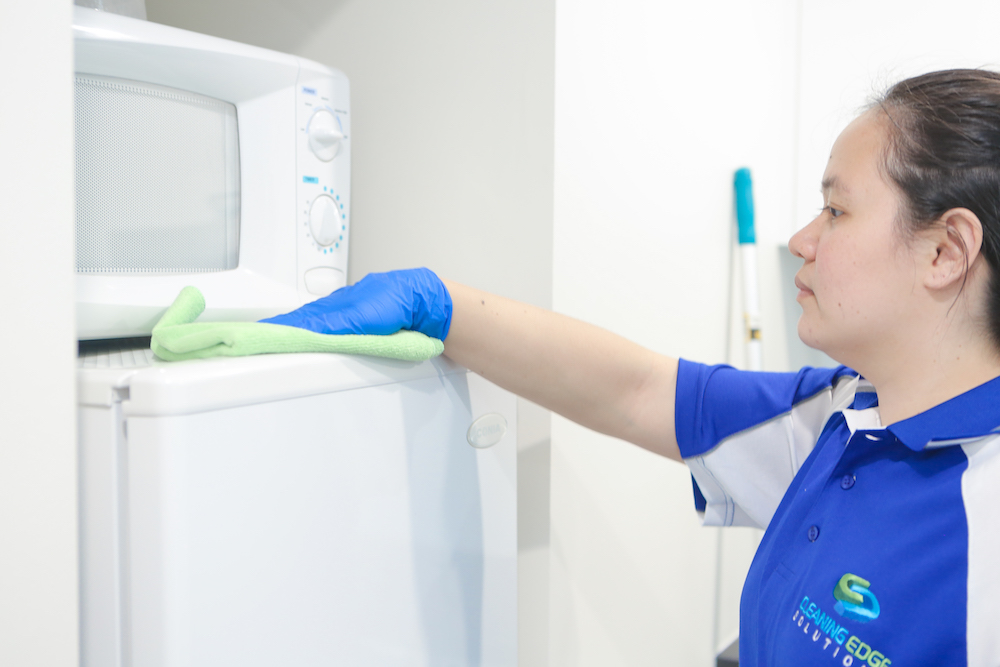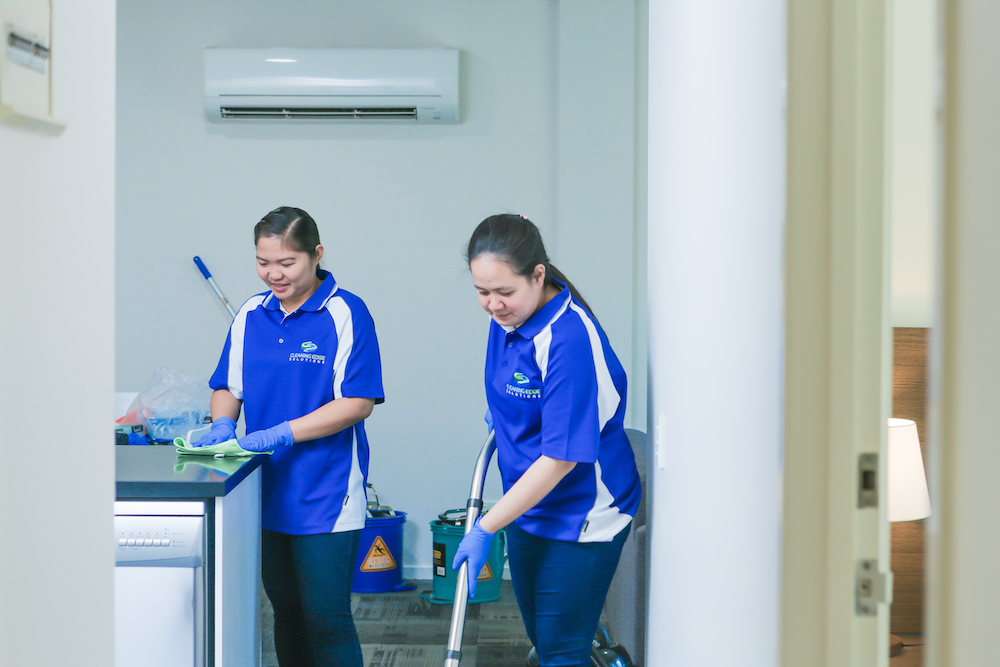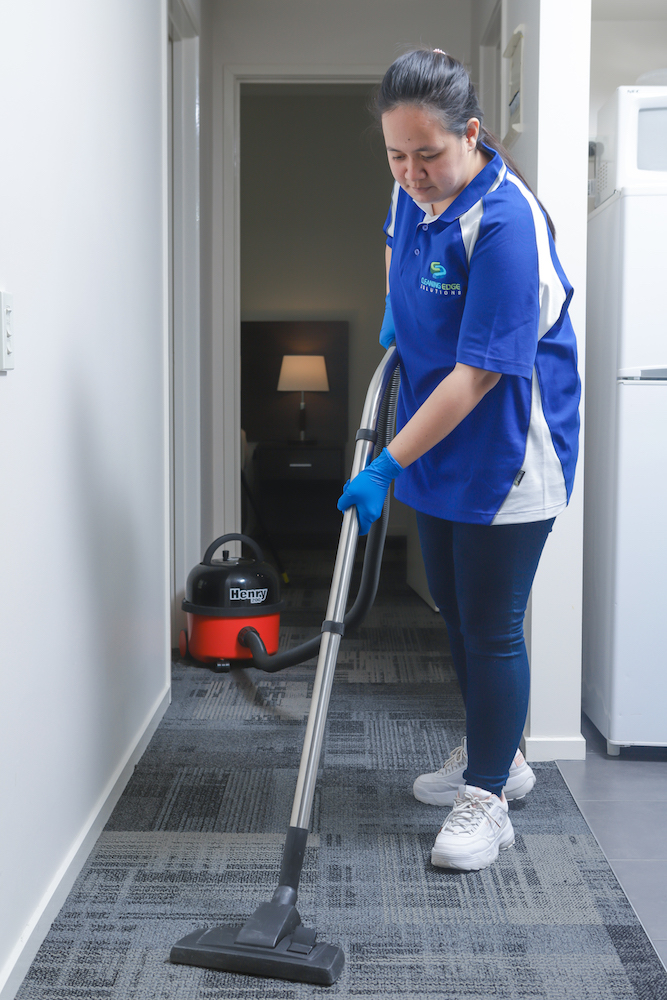If you've ever felt overwhelmed by the standards associated with cleaning an aged care facility, or providing home based care cleaning services in the community, especially since the spread of COVID-19, you are not alone.
As the Approved Provider of an Aged Care Home or Community Care Service the onus is on you to protect your residents or clients, visitors and staff.

Recent outbreaks have highlighted not only how vulnerable consumers are to infectious disease outbreaks, but have also exposed the vulnerability of care and support staff. It is challenging to run an aged care home or service at any time, but doubly difficult if staff contract an infectious disease like COVID-19 as this adversely impacts your staffing levels. Being short-staffed forces you to bring in agency staff who don’t know your residents or clients or your systems which can compromise the quality of care offered to consumers.
The recent outbreak in South Australia highlights that despite best efforts, we are not able to guarantee that new COVID-19 outbreaks won’t occur in other States. That’s the new COVID normal that we’re currently living under.
Our elderly family members are some of the most vulnerable in our society. An outbreak in a facility or their local community puts them at risk, causes untold anxiety amongst family members and creates a high-risk work environment for staff. An outbreak can also place an aged care home or service in the media spotlight for all the wrong reasons. As the provider, you are left trying to manage fires on several fronts.
How do you get on the front foot?
If you are proactive, protecting your residents, clients and staff doesn’t have to be daunting. With the right systems and processes at your disposal, you can ensure that you minimise the risk of an outbreak that can arise out of less than optimal cleaning practices.
Our experience is that successful outcomes are driven by careful staff selection, in-depth training, clear communication and a transparent quality management system.
Given the recent outbreak in SA, this week we have turned to an expert in the cleaning sector to find out more on this topic: Clayburn Figredo, Managing Director at Cleaning Edge Solutions. Clayburn and his team have offered some great tips, whether you manage all cleaning in house or use contractors.
In this article, we share with you six key elements that form the foundation of quality cleaning practices that can help keep your service environment clean and safe for residents, staff and visitors; keeping in mind that they also translate well to the home care setting.
Not only will you be protecting consumers and staff and meeting quality expectations by putting these elements into practice, they will help protect your business, allowing you to focus on running your service.
Cleaning is no longer viewed as simply a business expense; it is an investment in the future of your service. When we're done you'll know exactly how to have a cleaning protocol that minimises the likelihood of a COVID-19 outbreak in a residential care home, as well as in a community care based setting.
6 Steps to Effective Cleaning Practices
1. Select the right staff
You want staff who are committed to doing the best job possible, that way you are less likely to have problems to begin with. The cleaning industry is often viewed as an entry level job and therefore can attract people who are finding it difficult to land their preferred job. However, if the staff member is not committed to the industry and the desired outcomes, this can cause problems for you down the track. You want to find those people who love to tidy things up, leave a room sparkling clean and find satisfaction in knowing that they have left the place spick and span and safe for the next person who enters the room.
- If using contracted, part-time or casual staff – discuss their work situation with them, e.g. are they working a number of different jobs or perhaps they only have this one part-time job that supports them, find out whether there are options in place that support them to stay home if they are sick. While this may seem like an odd point, it means that the employee will not turn up at work if infected, or when they are showing symptoms, simply because they have no other option to pay their rent and put food on the table.
- It's a given to make sure all staff and contractors adhere to the Police Check requirements and have risk assessment and monitoring provisions in place.

You also want staff who understand your instructions and who are willing to follow them to the letter. Attention to detail and following set processes is the key to ensuring that the facility or client's home is left in a clean and safe state.
If your staff are committed and supported to do a good job they will complete their duties to a much higher standard. Recognise and reward good staff by paying them according to their award including all their entitlements and sufficient hours to meet their needs. If your organisation follows this philosophy, staff are less likely to need to work multiple jobs at multiple locations simply to make ends meet, reducing the risk of transfer of infection from another aged care home or workplace.
2. Train them, train them and train them again
After you've selected the right people, it’s worth investing in training them to the highest possible standards. The obvious benefits are that they know what to do, and equally importantly what not to do.
For example, you want them to know that they must use specific coloured cloths for designated tasks and areas to minimise the risk of cross contamination and that they can’t just use any old coloured mop and bucket to clean the kitchen.
It’s important not to assume that a person will know cleaning techniques and requirements, even if they have worked in the industry previously. Sometimes people have fallen into some bad habits, or they may have been trained incorrectly (or not at all), so make sure they are well briefed in your expectations and standards.
It’s critical that all staff involved in cleaning and housekeeping understand their responsibilities. Many people working in the industry have English as a second language and sometimes their command of the language can be poor, increasing the risk of miscommunication and leading to frustration and poor outcomes.
- Improve understanding by finding ways to overcome language barriers like providing training documentation and instructions through relevant mediums, such as an online platform that allows documents to be translated into multiple languages.
- Use videos to show your expectations, or consider using graphical support tools such as storyboards, which are not dependent on being able to read long and complex sentences and therefore can be more easily comprehended. To quote an old saying: a picture tells a thousand words.
3. Set clear KPI’s and expectations
If your cleaning staff understand exactly what they need to do, how long they should be spending on each task and how often the task needs to be completed, there is less room for confusion and poor outcomes.
- Clearly defined expectations ensure that both parties have a common understanding of the service and quality level that must be met.
- Use clear work instructions, cleaning registers and checklists to document what happens, record when it happens and communicate / trigger action on any issues in a timely way.
Don’t forget: there are specific Aged Care and Disability Quality standards where cleaning and having proper processes, systems and risk management apply.
For example, Aged Care Quality Standard 3: Personal and Clinical Care, Standard 4: Services and Supports for Daily Living, Standard 5: Organisation's Service Environment, and Standard 8: Organisational Governance. The NDIS Practice Standards also have clear expectations – you’ll find these outlined under Standards 2, 3, 4, 5, and 10.
4. Use the right equipment and materials
Good outcomes rely on having the right equipment and chemicals in place. Standard cleaning and disinfection practices are still important, such as having colour coded mops and buckets, having regular cleaning schedules in place and limiting the chance of cross infection. However, 2020 has ushered in new infection control practices that go beyond this to protect our most vulnerable.
Since the outbreak of COVID-19, an anti-bacterial solution is no longer considered sufficient to eliminate viral particles.
- Using ARTG (Australian Register of Therapeutic Goods) approved cleaning solutions, along with the three-step process of cleaning, disinfecting and then sanitising, is the only way to ensure that both high touch and low touch surfaces are cleaned to the correct standard. Selecting the right product can mean that high touch surfaces remain safe for up to 24 hours and low touch surfaces up to 30 days.
- In residential facilities and areas where there are many people moving around, added protection is provided through a regular program of fogging to ensure that surfaces such as walls, shelves and soft furnishings are also sanitised.
5. Improve outcomes through the use of technology
If you’re working in aged or disability care, you can’t help but notice the move towards becoming more technologically proficient. 2020 has only increased that advance. There are many ways that technology can help your facility or home care service become more productive, improve communication, register improvements and assist with contact tracing in the worst case scenario. Some ideas you may want to investigate include:
- Replace the old comms book with an easy to use app so that cleaners are informed of specific cleaning issues that need to be addressed immediately.
- Set up a WhatsApp group to communicate vital information directly to each cleaner’s phone.
- Use technology to provide visual recognition and time stamping technology to track when your cleaners arrive at the facility and when they leave. An invaluable time saving solution in case of an outbreak.
- Use rostering software that assists you to manage client contact bubbles and easily recall who was where and potential close contacts for cleaning teams who are working out in the community.
In the case of a COVID-19 outbreak, speed of communication and contact tracing is critical to disseminating information and consequently slowing down the spread of the virus.
6. Review your cleaning schedule
At this time, reviewing your cleaning schedule is critical. What was appropriate and effective before may no longer be relevant. Analyse your cleaning schedule, breaking it down into individual tasks and determine whether the frequency of the task has increased, whether the timing has changed and whether new tasks need to be added into the cleaning schedule.

By considering these steps, you decrease the chance of experiencing an outbreak of COVID-19 in your facility.
In the unfortunate event that an outbreak occurs however, you will be better placed and prepared to deal with the situation in an effective and efficient manner, and be able to demonstrate to authorities, consumers and their families that precautionary steps were taken and the crisis dealt with appropriately.
Being prepared and having sound cleaning practices in place also ensures that you can be responsive and support the safety of your residents, consumers and staff.
If you want to explore this topic further and understand what is involved in engaging an external cleaning service provider, or what you need to consider when developing your own cleaning practices and team, you can download the free COVID Cleaning Contractor Checklist from Cleaning Edge Solutions to learn about the 11 key questions you should ask your cleaning services provider. The checklist will also have relevance for services doing all in house cleaning too.
And if you’d like to discuss your facility or organisation’s contracted cleaning needs you can contact Clayburn Figredo (Managing Director, Cleaning Edge Solutions) on 0404 860 024, or email: clayburn@cleaningedge.com.au.

- April 2024 - April 12, 2024
- February/March 2024 - March 8, 2024
- January/February 2024 - February 9, 2024




